Industrial gas-fired boilers are widely chosen for their high combustion efficiency, low emissions, and fast heat response, but their initial capital cost—especially for large or high-efficiency systems—can be a financial barrier. Fortunately, businesses can access a range of financing solutions and incentive programs to ease upfront investment and accelerate return on investment, particularly when upgrading to low-NOx or energy-efficient models.
Financing and incentive options for industrial gas-fired boiler purchases include commercial loans, capital leases, vendor financing, energy efficiency grants, utility rebates, tax deductions (like accelerated depreciation), and performance-based Energy Service Company (ESCO) contracts. Many national and regional programs encourage the adoption of cleaner, more efficient gas-fired systems by offering incentives for emissions reduction, fuel switching, or system modernization.
Below is a structured guide to help you identify the best funding strategy for your gas boiler project.

What Commercial Financing Options Are Available for Industrial Gas Boiler Systems?
Upgrading or installing industrial gas boiler systems often requires substantial capital investment. Fortunately, a variety of commercial financing options can help spread the cost, manage cash flow, and support sustainability initiatives. Understanding these vehicles—from traditional loans to innovative energy-as-a-service models—empowers facility managers and CFOs to optimize financing decisions. 🔍
Industrial gas boiler systems can be funded through several commercial financing paths: traditional bank loans, equipment leases (capital or operating), Property-Assessed Clean Energy (C-PACE), energy savings performance contracts (ESPCs/ESCO models), on-bill financing, green bank loans, and efficiency-as-a-service agreements. Each option offers different impacts on cash flow, risk allocation, and balance sheet presentation.
Let’s explore each option, how they work, and which projects they’re best suited for.
🔍 1. Bank & Equipment Loans
Commercial Term Loans
Banks and specialty financiers offer fixed-rate loans (from $5K to $500K+) with terms typically spanning 3–10 years, allowing you to retain ownership immediately. Industry-specific lenders understand energy-efficiency projects, though may require collateral or down payments (biz2credit.com).Equipment Financing Loans
Tailored specifically for boilers and mechanical systems, equipment loans are secured by the asset and may offer attractive terms and lower rates. They align well with the useful life of boilers, preserving credit lines .
🔍 2. Equipment Leasing
Capital Lease
Functions like a financed purchase: lessee gets depreciation benefits and interest expense deductions, although it appears on the balance sheet. Often includes a bargain purchase option (betterbuildingssolutioncenter.energy.gov).Operating Lease
Off-balance-sheet structure (subject to current accounting standards) with lower payments—but no asset ownership. Suitable for standard systems with reliable residual value (betterbuildingssolutioncenter.energy.gov).
🔍 3. Energy Savings Performance Contracts (ESPCs/ESCOs)
ESCOs design, install, and even finance boiler installations under guaranteed-savings agreements. No upfront capital is required; repayment comes from verified energy cost savings. These models are ideal for larger projects seeking performance-based risk transfer (betterbuildingssolutioncenter.energy.gov).
🔍 4. C-PACE (Commercial Property Assessed Clean Energy)
C-PACE programs let commercial properties finance boilers via property-tax assessments. Financing terms stretch up to 35 years and can be off-balance-sheet since they attach to the property. Widely available across 37+ states (en.wikipedia.org).
🔍 5. On-Bill Financing
On-bill schemes allow utilities or lenders to fund boiler upgrades and recoup payments through utility bills. These often offer low or zero interest and simplify payment but depend on local utility participation (betterbuildingssolutioncenter.energy.gov).
🔍 6. Green Bank Loans
Green banks offer subsidized or credit-enhanced loans for clean-energy investments, including high-efficiency gas boilers. Loans typically have favorable rates and longer durations. They often pair with C-PACE or ESCO models .
🔍 7. Efficiency-as-a-Service (EaaS)
Also known as “Energy-as-a-Service”, EaaS providers own and operate boiler systems, and charge the customer a fixed fee or share of the energy savings. This model aligns incentives and transfers operational risk entirely away from the customer .
🔍 Choosing the Right Option
| Financing Option | Structure | Balance Sheet Impact | Best For |
|---|---|---|---|
| Term Loan | Fixed-rate loan | On-balance-sheet | Firms with good credit, seeking ownership |
| Equipment Loan | Secured loan | On-balance-sheet | Organizations preserving liquidity |
| Capital Lease | Finance lease | On-balance-sheet | Those wanting depreciation benefits |
| Operating Lease | Rental agreement | Potentially off-balance | Budget-conscious clients |
| ESPC/ESCO | Performance contract | Off-balance | Large-scale, results-driven projects |
| C-PACE | Property tax lien | Off-balance-sheet | Owners of owner-occupied industrial properties |
| On-Bill Financing | Utility repayment | Off-balance-sheet | Sites with supportive utility programs |
| Green Bank Loan | Subsidized loan | On-balance-sheet | Efficiency projects needing low-cost and long terms |
| EaaS Agreements | Service contract | Off-balance-sheet | Organizations wanting zero capital risk |
Summary
Industrial gas boiler systems can be financed through a rich selection of commercial solutions. Upfront purchase, lease, loan, or performance-based approaches each offer different cash flow and accounting treatments—from operating leases to C-PACE and ESCO structures. Best-fit financing depends on your energy savings plan, balance sheet goals, ownership preferences, and project scale. Early alignment with finance, operations, and procurement teams ensures optimal funding strategy.
Want help modeling which option suits your project profile?
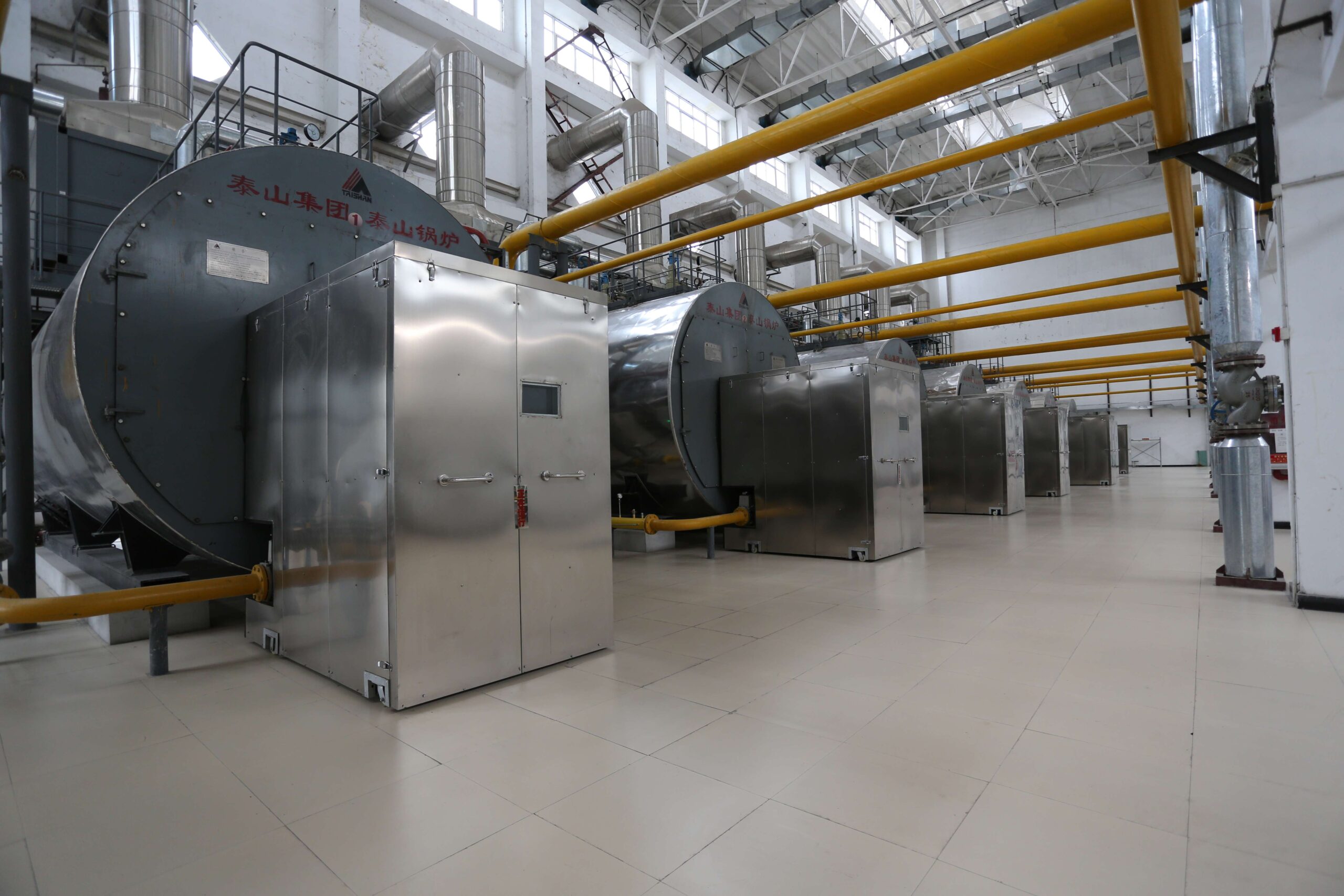
What Tax Credits or Accelerated Depreciation Programs Apply to High-Efficiency Gas Boilers?
High-efficiency gas boiler upgrades are one of the most cost-effective energy investments for industrial and commercial facilities. However, the upfront capital cost can still be a hurdle. 🔍 To ease the financial burden and accelerate ROI, several U.S. federal tax incentives and depreciation programs—including Section 179D, Investment Tax Credit (ITC), and MACRS with bonus depreciation—are available to eligible projects. These tools can reduce taxable income, improve project cash flow, and enhance financial returns when structured strategically.
Eligible high-efficiency gas boilers may qualify for Section 179D energy-efficiency deductions (up to $5.81/sq ft), Investment Tax Credits (ITC) under the Inflation Reduction Act (up to 30%), and accelerated depreciation under the Modified Accelerated Cost Recovery System (MACRS), including 40% bonus depreciation in 2025. These incentives significantly reduce tax liability and boost the economic case for energy-efficient gas boiler systems.
Understanding these financial mechanisms is essential for CFOs, energy managers, and procurement leaders planning boiler projects in commercial or industrial settings.
MACRS allows for the accelerated depreciation of high-efficiency gas boiler systems in industrial settings.True
Under the U.S. tax code, eligible energy systems—including gas boilers—can be depreciated using the MACRS schedule, with bonus depreciation permitted under recent federal laws.
🔍 Section 179D: Energy-Efficient Commercial Buildings Deduction
Section 179D offers one of the most robust tax deductions for HVAC and hot water systems, including high-efficiency gas boilers:
| Feature | Benefit |
|---|---|
| Eligibility | Applies to commercial/industrial building upgrades |
| Maximum Deduction | Up to $5.81/sq ft in 2025 |
| Requirements | ≥25% reduction in total building energy cost vs ASHRAE baseline |
| Bonus Criteria | Higher deductions if prevailing wage and apprenticeship rules met |
To claim 179D:
The system must contribute to a modeled or measured energy cost reduction.
Documentation includes energy analysis, certifications, and IRS Form 7205.
Tax-exempt entities can allocate the deduction to designers or ESCOs.
179D is ideal for whole-building retrofits or large-scale heating system upgrades in hospitals, warehouses, factories, or government-owned facilities.
🔍 Investment Tax Credit (ITC) for Gas Boilers
The Energy Investment Tax Credit under the Inflation Reduction Act extends to energy-efficiency technologies beyond renewables:
| Tier | Credit % | Requirements |
|---|---|---|
| Base ITC | 6% | Standard efficiency, wage compliance |
| Bonus ITC | Up to 30% | Meets domestic content, location, or GHG reduction goals |
If a boiler project contributes to reduced facility emissions and aligns with broader energy system improvements (e.g., hybrid CHP), it may be eligible for this credit.
This credit is claimed using IRS Form 3468, and it may be stacked with 179D and MACRS.
🔍 Accelerated Depreciation (MACRS + Bonus)
| Depreciation Tool | Description |
|---|---|
| MACRS (20-Year Property) | Allows recovery of boiler cost over a 20-year schedule |
| Bonus Depreciation (2025) | 40% immediate write-off in Year 1 (IRA tapering rules apply) |
These apply to boilers installed and operational before year-end and are especially powerful when paired with the ITC and 179D deduction.
Important rule: if the ITC is claimed, the depreciable basis must be reduced by 50% of the ITC value.
🔍 Financial Impact Example (2025, Industrial Facility)
| Incentive | Amount |
|---|---|
| Project Size | $500,000 gas boiler system |
| Section 179D Deduction | $150,000 (based on 30,000 sq ft at $5.00/sq ft) |
| ITC | $75,000 (15% estimated with compliance bonuses) |
| Bonus Depreciation (40%) | $170,000 Year 1 deduction |
| Combined Tax Benefit | Over $300,000 in first-year savings |
These incentives reduce taxable income, accelerate project breakeven, and improve IRR.
High-efficiency gas boilers in industrial applications are not eligible for any federal tax incentives.False
Industrial gas boilers can qualify for Section 179D deductions, ITC under the IRA, and accelerated depreciation under MACRS.
🔍 Compliance & Filing Tips
Maintain commissioning reports, spec sheets, energy models, and prevailing wage records.
Engage a tax professional or EPAct 179D consultant early in project design.
Pair incentives with state rebates or green bank loans for maximum benefit.
File IRS forms 7205 (179D), 3468 (ITC), and 4562 (depreciation) appropriately.
Summary
High-efficiency gas boiler systems installed in commercial or industrial facilities benefit from a trio of powerful tax tools: Section 179D deductions, ITCs under the Inflation Reduction Act, and MACRS accelerated depreciation. These programs dramatically lower first-year tax liability and increase project cash flow. When strategically layered, they can cover up to 60% or more of the capital cost. Facility owners, CFOs, and energy engineers should integrate these incentives into financial models and procurement strategies from the earliest design stages to fully capitalize on their value.
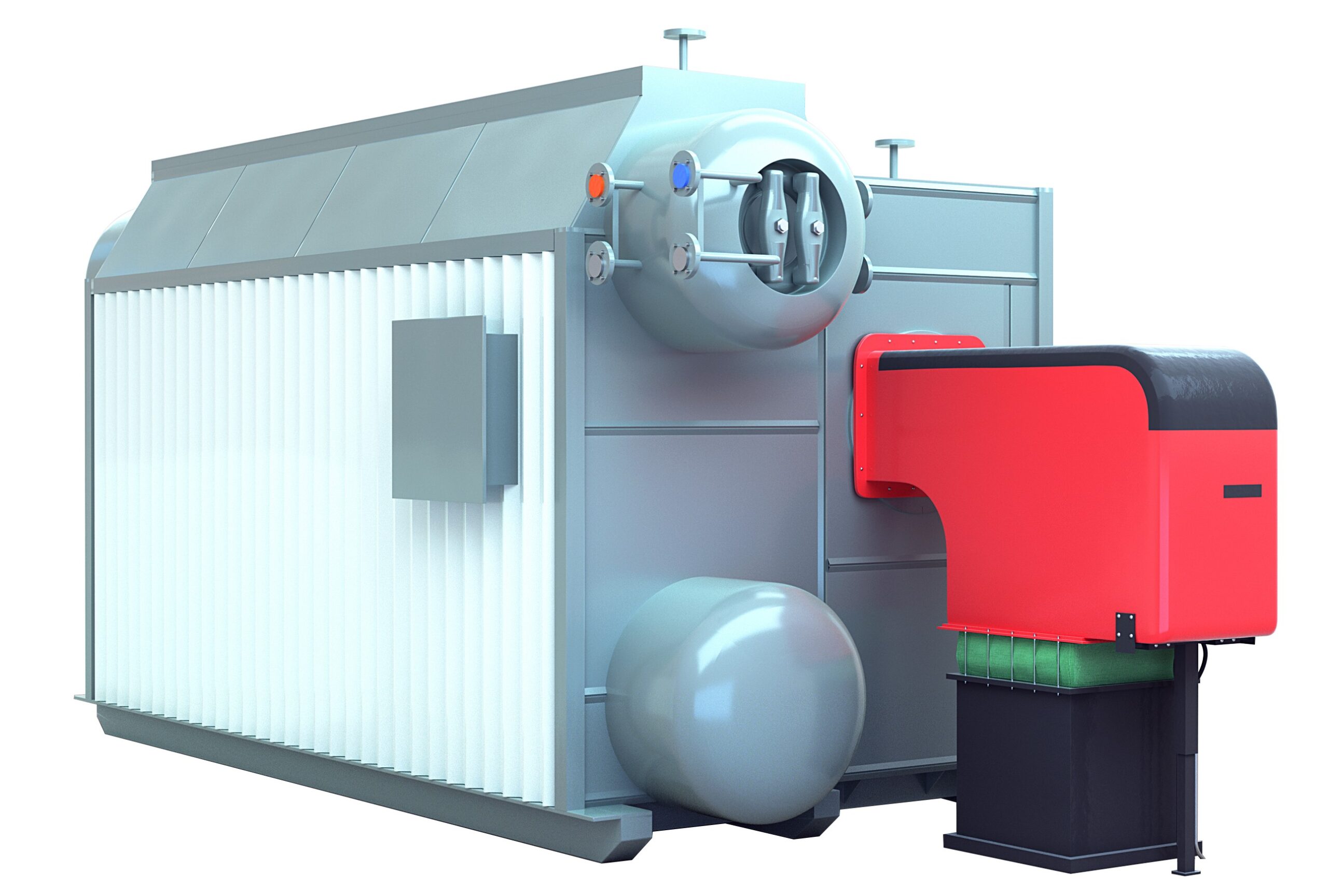
How Do Utility Rebate Programs Reduce Upfront Costs for Gas Boiler Upgrades?
High-efficiency gas boiler upgrades can substantially reduce energy consumption, but the initial investment often deters organizations from moving forward. Fortunately, utility rebate programs provide a powerful solution. These rebates offset upfront costs—often covering 10% to 40% of the total expenditure—and are available to both commercial and industrial facilities. 🔍 Understanding how these rebates work is critical to maximizing your ROI, improving energy performance, and unlocking project feasibility.
Utility rebate programs reduce upfront costs for gas boiler upgrades by providing financial incentives for purchasing and installing high-efficiency equipment. Rebates are offered as either fixed (prescriptive) amounts or custom performance-based payouts based on projected energy savings. These programs typically cover 10–40% of equipment and installation costs, effectively lowering capital requirements and improving return on investment.
Let’s break down the mechanics of how these rebates work, what qualifications apply, and how to optimize them for your project.
Utility rebates for gas boilers are only available for residential customers.False
Most utility rebate programs offer incentives for commercial and industrial gas boiler upgrades, often with higher payouts than residential programs.
🔍 Types of Utility Rebates for Gas Boilers
| Rebate Type | Description | Typical Impact |
|---|---|---|
| Prescriptive Rebates | Fixed dollar amount per boiler, based on efficiency rating and size | $1,000–$20,000 per unit |
| Custom Rebates | Calculated based on estimated fuel savings (e.g., $/MMBtu saved annually) | Covers up to 40% of project cost |
| Component Incentives | Rebates for accessories like economizers, modulating burners, or O₂ trim | 25–100% of component cost |
| Tune-Up Programs | Rebates for performance optimization and testing | $250–$1,000 per boiler system |
Many programs require pre-approval before equipment is purchased or installed.
🔍 Examples of Gas Boiler Rebate Programs
| Utility | Region | Rebate Value | Eligibility |
|---|---|---|---|
| UGI Utilities | Pennsylvania | $2,000 base + $2/MBH | ≥90% AFUE or ENERGY STAR® certified |
| Columbia Gas | PA, OH, MA | $1,000–$2,500 | ≥94% AFUE boilers, combi systems |
| National Fuel Gas | New York | $15/Mcf saved (custom) | Based on annual fuel savings modeling |
| MN Energy Resources | Minnesota | $800/MMBTU input | Includes modulating and condensing boilers |
| SoCalGas | California | $1–$3/MMBTU input | For commercial/industrial systems |
These rebates can dramatically reduce the capital burden for upgrading existing systems or implementing new high-efficiency boiler projects.
🔍 Cost Reduction Example: 3 MMBTU Condensing Boiler
| Item | Cost (USD) |
|---|---|
| Equipment + Installation | $55,000 |
| Utility Prescriptive Rebate | –$12,000 |
| Net Upfront Cost | $43,000 |
| Annual Fuel Savings | ~$5,500 |
| Payback Period Without Rebate | 10 years |
| Payback Period With Rebate | 7.8 years |
This project saved 22% in upfront capital and shortened the payback period by over two years thanks to utility rebates.
🔍 Qualification Requirements
To qualify for rebates, utilities typically require:
Pre-application or project approval
Use of certified equipment (ENERGY STAR®, AHRI, ASME compliant)
Post-installation verification (photos, test reports)
Submission of spec sheets, invoices, and boiler registration documents
M&V plan or baseline energy data for custom projects
Utilities require proof of efficiency and installation to approve rebate payouts.True
To ensure proper use of funds, utilities request documentation such as spec sheets, installation photos, and final commissioning reports.
🔍 Strategic Tips to Maximize Rebate Value
Use a rebate consultant or experienced vendor to navigate application forms.
Stack incentives with Section 179D tax deductions or local clean energy financing.
Document installation and savings clearly for auditing and bonus rebates.
Submit early, as funds may be limited on an annual basis.
Design for modular or high-capacity boilers, which often yield higher rebates.
Summary
Utility rebate programs are an essential tool for reducing the capital burden of high-efficiency gas boiler upgrades. By offering thousands—or even tens of thousands—of dollars in upfront savings, these rebates make energy-efficient projects more viable and financially attractive. Whether prescriptive or custom, these programs reward smart energy investments with lower costs and faster returns. Always align your boiler design and procurement timeline with your utility’s rebate structure to maximize savings and sustainability impact.
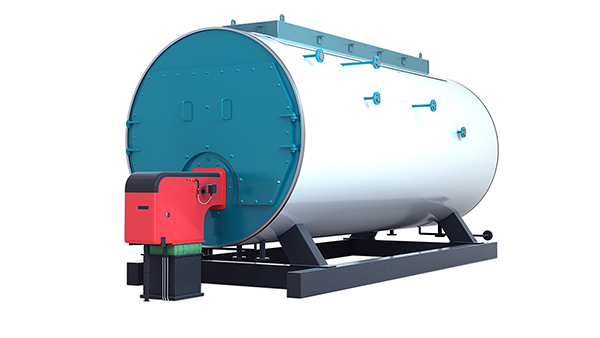
Are There Government or Environmental Agency Grants for Low‑NOₓ or Ultra‑Efficient Boilers?
Upgrading to low‑NOₓ or ultra-efficient boiler systems is not only an environmental priority, but also increasingly eligible for public funding. Across federal, state, and local levels, agencies offer grants and incentives designed to reduce emissions, support clean technology adoption, and help offset upfront costs. 🔍 Leveraging these opportunities makes high-performance boilers more financially accessible and improves ROI.
Key programs include: CARB (California) grants like Carl Moyer and PLACE low‑NOₓ funding, DOE’s EECBG and ARPA‑E for pilot burner tech, EPA’s Diesel Emissions Reduction Act (DERA) for emission-focused upgrades, and state project/infrastructure grants (e.g. Washington SPI/EECBG). These programs help subsidize installation of advanced combustion equipment, ultra-low NOₓ burners, and efficiency-boosting retrofits—reducing capital cost by 30–100% in some cases.
Let’s explore how these programs work, who they target, and how to maximize financial benefits.
Grants for low‑NOₓ or ultra-efficient industrial boilers are only available for vehicle engines.False
Several programs—such as Carl Moyer, PLACE, and EPA DERA—also fund industrial combustion upgrades, including industrial burners and boiler systems.
🔍 California Grants: Carl Moyer & PLACE Programs
| Program | Target Recipients | Eligible Upgrades |
|---|---|---|
| Carl Moyer Program | Industrial fleets and equipment in CA | Retrofit/replacement of combustion equipment (low‑NOₓ burners, advanced boilers) (en.wikipedia.org, calepa.ca.gov) |
| PLACE (Providing Loan Assistance for CA Equipment) | Small business owners | Low‑interest loans or guarantees for low‑NOₓ equipment replacements |
These California-driven programs support early adoption of advanced burner technologies and ultra-low NOₓ combustion systems, particularly in heavily industrial areas.
🔍 Federal Grants & Pilot Projects
DOE ARPA‑E: Funds R&D on ultra-low NOₓ burners, hydrogen combustion tech, etc. Recent awards include $250K–$1.6M for SBIR-funded burner development (clearsign.com). Great for pilot or demonstration projects.
EPA DERA: Provides competitive grants and low-cost financing targeted at NOₓ and PM reductions in industrial engines and combustion systems (en.wikipedia.org).
These federal funds support technological innovation and emission reduction in industrial thermal systems.
🔍 State-Level Energy & Infrastructure Grants
EECBG (Energy Efficiency and Conservation Block Grants): Awarded to municipalities—including funds for district heating/CHP boiler upgrades (en.wikipedia.org).
Washington SPI / Energy Efficiency Grants: State programs covering design and installation costs of high-efficiency heating systems, like ultra-efficient boilers (commerce.wa.gov).
Similar opportunities exist in other states, often aligned with climate goals.
🔍 International Examples
Canada’s Low-Carbon Industrial Heating Solutions: Offers Phase 1 grants up to CAD 150,000 and Phase 2 up to CAD 1 million for clean combustion technology development—applicable also to ultra-efficient boiler advancements (ised-isde.canada.ca).
Other nations may offer analogous innovation grants or funding toward low-emission industrial heating systems.
🔍 How Much Upfront Costs Can These Grants Offset?
| Grant | Typical Support | Impact on Boiler Costs |
|---|---|---|
| Carl Moyer / PLACE | Cover incremental cost of low‑NOₓ tech | 30–100% of upgrades |
| EECBG / State Projects | Cover efficiency upgrade capital | Partial/full capital offset |
| DOE ARPA‑E / Canada | R&D and demo funding | Reduces development cost |
| EPA DERA | Retrofit emission controls | Partial cost subsidy/loan |
These grants can cover major portions of equipment and installation cost, making advanced combustion technology economically viable.
🔍 Tips to Maximize Grant Success
Identify relevant programs based on region & emissions focus.
Early project scoping to align with grant eligibility.
Prepare technical documentation on projected NOₓ, efficiency gains.
Engage with agencies early for guidance on program specifics.
Combine multiple funding sources (e.g., state + federal).
Monitor program timelines, as funds are often limited or cyclical.
Summary
Yes, a range of government and environmental agency grants exist for upgrading to low-NOₓ or ultra-efficient boiler systems. From California’s Carl Moyer and PLACE programs to federal grants like EPA DERA, DOE ARPA-E, and EECBG, substantial funding is available to offset significant portions—up to 100%—of the incremental costs. Even provincial and international innovation grants support cleaner burner and boiler development. To capitalize on these incentives, align project scope with program goals, gather strong technical evidence, and apply early.
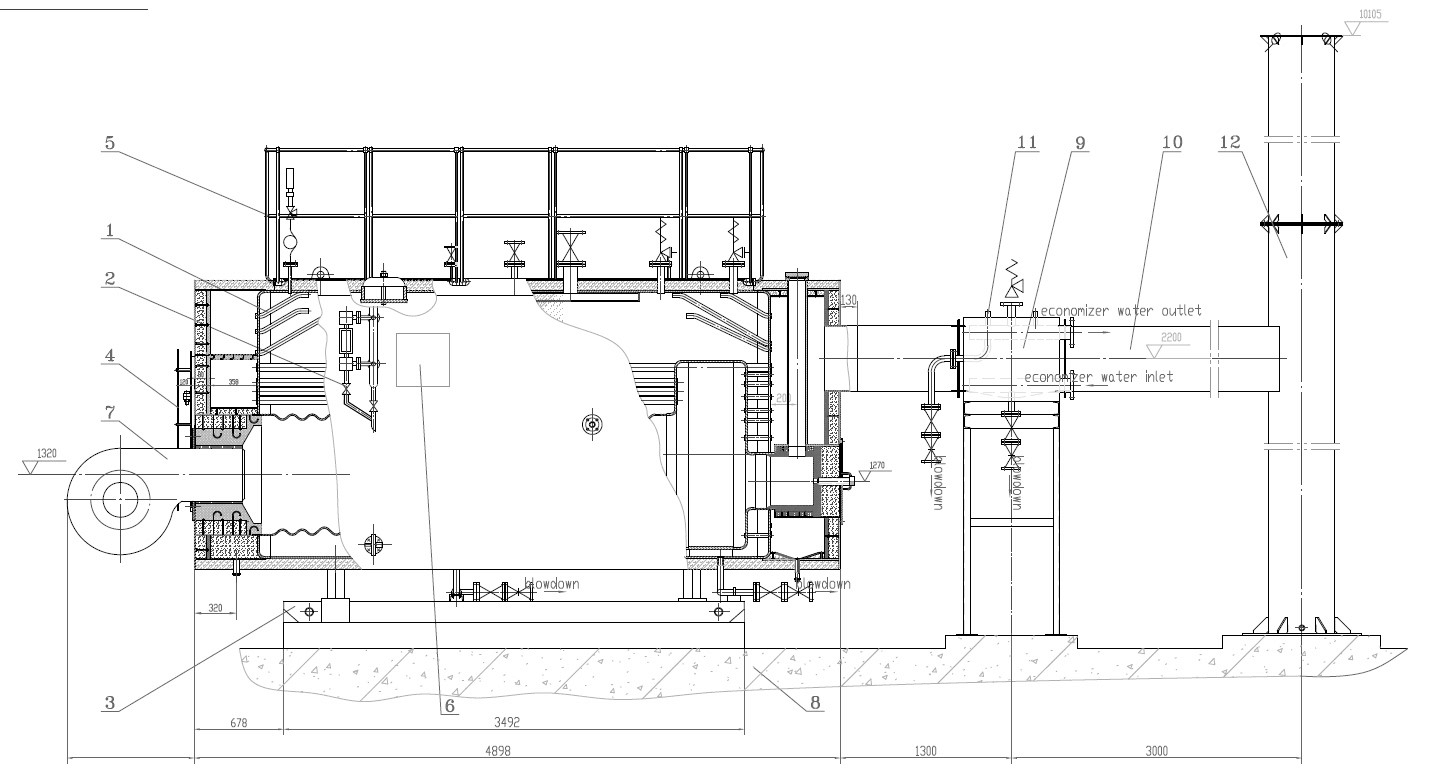
Can ESCO Models and Performance Contracts Reduce Capital Strain for Facility Upgrades to Industrial Gas Boilers?
Industrial gas boiler upgrades can be technically essential—but financially daunting. Rising energy costs and emissions pressures make high-efficiency systems a priority, yet many facilities struggle with the upfront capital needed to modernize. 🔍 Energy Service Companies (ESCOs), using Energy Savings Performance Contracts (ESPCs), offer a powerful solution by eliminating initial capital requirements and tying payment to real energy cost savings. This model transfers performance risk to the ESCO while delivering operational and environmental improvements.
Yes, ESCO models and performance contracts reduce capital strain for industrial gas boiler upgrades by funding the project upfront and recovering costs through guaranteed energy savings. Through an ESPC, the ESCO designs, finances, installs, and maintains the high-efficiency boiler system, and the client repays from verified utility bill savings—often keeping the upgrade off their balance sheet.
This approach makes it possible to deploy high-performance systems immediately without budget delays or debt service burdens.
ESCOs require facilities to fund the gas boiler project upfront.False
Under ESPC agreements, the ESCO or its financing partner funds the project, with the client repaying from future energy savings.
🔍 What Are ESCOs and How Do ESPCs Work?
| Component | Role in Boiler Upgrade |
|---|---|
| ESCO | Acts as technical contractor and performance guarantor |
| ESPC | Contract tying payments to measured utility cost reductions |
| M&V Plan | Validates savings with IPMVP-compliant protocols |
| Upfront Cost | Covered by ESCO or financing partner |
| Ownership | Client may retain or receive ownership post-term |
ESPCs typically last 10–15 years, aligning payment with savings lifecycle.
🔍 Why This Model Is Ideal for Industrial Gas Boilers
| Boiler System Feature | ESCO Advantage |
|---|---|
| Condensing Gas Boilers | High efficiency yields faster paybacks |
| Modulating Burners | Strong impact on part-load savings |
| O₂ Trim Controls | Optimizes combustion and lowers gas use |
| Heat Recovery Integration | Stack economizers boost ESPC savings margin |
| Automation | Enables remote diagnostics for performance M&V |
These upgrades reduce gas bills by 20–40%, often enough to cover full project cost over the ESPC term.
🔍 Key Financial and Operational Benefits
| Benefit | Explanation |
|---|---|
| Zero upfront capital | No budget approval delay or debt issuance |
| Off-balance-sheet treatment | Depending on structure and FASB/GASB rules |
| Risk transfer | ESCO guarantees performance; they absorb underperformance |
| Simplified procurement | Often streamlined under state or federal ESCO lists |
| Sustainability gains | Reduces Scope 1 emissions and boosts ESG metrics |
Performance contracts for gas boilers often shift technical and financial risk to the ESCO.True
In an ESPC, the ESCO assumes performance risk by guaranteeing that energy savings will cover the project cost.
🔍 Real-World Case Study: Food Processor Boiler Retrofit
| Metric | Result |
|---|---|
| System | Two 3 MMBTU/hr high-efficiency gas boilers |
| ESCO Contract | 12-year ESPC with annual M&V |
| Project Cost | $320,000 (funded by ESCO) |
| Annual Energy Savings | $46,000 |
| Annual Payment | $40,000 |
| Net Positive Cash Flow | $6,000/year from Day 1 |
Result: Immediate operational savings, no CAPEX allocation, full emissions compliance.
🔍 What to Look for in an ESCO Partner
Proven gas boiler project experience
Certified M&V specialists (CMVP, IPMVP)
Transparent performance calculation methods
Strong financial partnerships for project funding
Capability to offer multi-measure upgrades (boilers + controls + insulation)
Ask for boiler-specific performance history and references before signing.
Summary
Yes, ESCO models and performance contracts are a smart, effective way to reduce capital strain when upgrading to high-efficiency industrial gas boilers. Through ESPCs, facility managers can unlock modern boiler systems without upfront capital, avoid procurement delays, and tie payments directly to measurable energy savings. With strong M&V frameworks and technical guarantees, ESCOs provide a risk-shifted, results-driven path to thermal system modernization. If capital constraints are slowing your boiler project, performance contracting may be the solution you need.
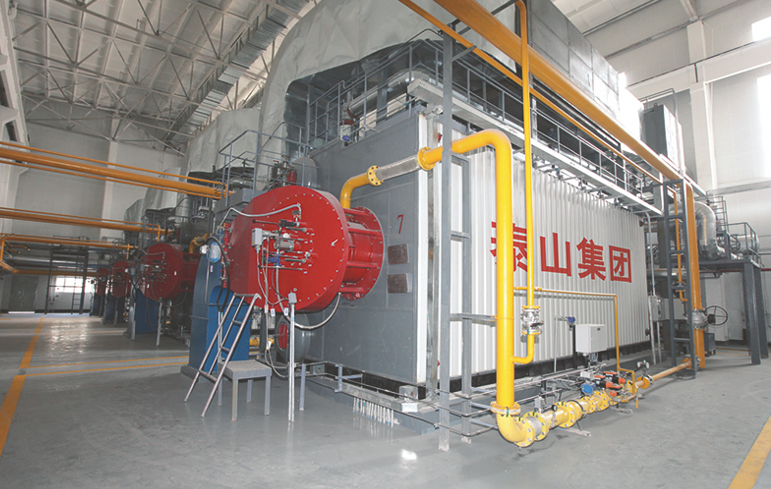
What Are the Eligibility Criteria and Steps for Accessing Funding for Industrial Gas Boiler Projects?
Upgrading industrial gas boilers can offer high efficiency gains and emissions reductions—but navigating the funding landscape requires understanding eligibility requirements and application procedures. 🔍 Government programs, utility rebates, and green financing structures each have distinct qualifications and timelines. A clear roadmap ensures your project accesses the maximum incentives with minimal delays.
Eligibility criteria often include energy savings thresholds, equipment certification, facility usage, and project size. The application steps typically involve pre-screening, documentation submission, technical review, implementation, verification, and funding disbursement. Structured compliance with these steps unlocks rebates, tax credits, loans, or performance contracts that enhance boiler upgrade ROI.
Here’s a step-by-step breakdown of qualification pathways and best practices to secure funding effectively.
Gas boiler rebates and funding programs are available without efficiency thresholds.False
Most programs require boilers to meet minimum efficiency standards (e.g., ≥ 90–95 % AFUE) or achieve a specified energy savings percentage to qualify.
🔍 1. Eligibility Criteria for Common Funding Programs
| Program Type | Common Criteria |
|---|---|
| Utility Rebates | Boiler must exceed efficiency baseline (e.g., ≥ 90 % AFUE); ENERGY STAR® or AHRI certification; submit prescriptive or custom application. |
| Section 179D Tax Deduction | ≥ 25 % energy cost savings vs baseline; energy analysis documentation; prevailing wage/apprenticeship optionally required for max deduction. |
| Energy ITC (IRA) | High-efficiency equipment; installation compliance with wage and domestic-content rules; part of energy-cost-saving infrastructure. |
| MACRS & Bonus Depreciation | Placed-in-service during tax year; recovered using IRS 4562 schedule; cannot double-claim with ITC. |
| ESCO / ESPC Programs | Sufficient project size for savings-based contracting; ESCO must offer M&V plan; client must allow performance contracting. |
| C-PACE Financing | Property owner (or consent from owner) status; building value; located in C-PACE jurisdiction; efficiency upgrades tied to property. |
| Green Bank or Grant Programs | Boiler must meet energy or emissions benchmarks; applicant must meet credit or non-profit/public entity criteria. |
🔍 2. Application Process: Step-by-Step Guide
| Step | Tasks |
|---|---|
| Pre-Qualification | Review program criteria; contact program administrator; request pre-approval if required. |
| Project Planning | Select certified boiler model; design energy improvements; build baseline savings model. |
| Proposal Submission | Complete utility or grant form; attach spec sheets, site plan, savings calculation; include contractor credentials. |
| Technical Review | Program evaluates equipment specs, savings methodology; may request negotiations or adjustments. |
| Pre-Approval or Reservation | Rebate or loan offers are reserved—documents define project scope, timelines. |
| Implementation | Install boiler following approved scope; gather invoices, photos, commissioning reports; engage licensed contractors. |
| Verification & M&V | Submit project closeout package; perform post-install inspection; measure savings (utility billing analysis or metered savings). |
| Funding Disbursement | Fund distributed as rebate check, utility bill credit, loan draw, or tax deduction via tax filing. |
🔍 3. Timing & Coordination Tips
Start early: Many programs require pre-approval before equipment ordering.
Coordinate across teams: Engineering, procurement, tax, and legal must align documentation and responsibilities.
Stack incentives: Combine rebates with Section 179D, ITC, bonus depreciation, or C-PACE financing for maximum benefit.
Use experts: Boiler vendors, energy consultants, or rebate specialists can fast-track approval and avoid errors.
🔍 4. Documentation Required for Approval
Equipment spec sheets, AFUE ratings
Energy savings models or simulations
Pre-installation application forms
Purchase agreements and invoices
Installation photos or commissioning checklists
Utility billing data or M&V reports
Tax documentation (Forms 7205, 3468, 4562)
Wage and domestic-content affidavits (if applying for bonuses)
Only boiler equipment data sheets are needed to qualify for rebates.False
In addition to specs, rebate programs, tax credits, and loans require energy savings analysis, invoices, installation evidence, and verification reports.
Summary
Accessing funding for industrial gas boiler upgrades requires meeting performance thresholds, selecting certified equipment, and following structured application steps. Whether using utility rebates, tax incentives, ESCO models, or financing, success depends on early planning, coordinated documentation, and expert support. By systematically navigating eligibility and application requirements, facilities can secure funding that dramatically reduces project costs, enhances ROI, and supports sustainability goals.
🔍 Conclusion
Gas-fired boiler projects can be made more financially accessible through a blend of strategic financing and incentive programs. Whether you’re installing a new system or upgrading an existing one, leveraging loans, rebates, tax incentives, or energy performance contracts can significantly reduce your out-of-pocket investment and support long-term cost savings. The key is to align your boiler project with energy efficiency and emissions goals that qualify for financial support.
📞 Contact Us
💡 Need assistance identifying financing or incentives for your gas-fired boiler project? Our specialists provide ROI planning, funding research, and full project support for high-efficiency boiler systems.
🔹 Let us help you fund your gas boiler upgrade with confidence and capital efficiency. 🔥💰✅
FAQ
What financing options are available for industrial gas-fired boilers?
Businesses can access several financing mechanisms, including:
Capital equipment loans from banks or green lenders
Operating leases or lease-to-own programs
Energy Performance Contracts (EPCs) from energy service companies (ESCOs)
Vendor-sponsored financing plans for bundled purchase and support
These options reduce upfront costs and align payments with operational cash flow.
Are there tax incentives or depreciation benefits available?
Yes. Industrial gas-fired boilers may qualify for:
Section 179 tax deduction (up to $1 million in 2024 for capital equipment)
MACRS depreciation for accelerated cost recovery
Federal or state-specific clean energy tax credits, especially for systems using low-NOx burners or condensing technology
Can utilities offer rebates for installing gas-fired boilers?
Many utilities offer:
Rebates for high-efficiency gas boilers (e.g., ≥85–95% thermal efficiency)
Performance-based incentives for energy savings verification
Custom incentives for projects with heat recovery, flue gas condensers, or advanced automation
What grants or energy programs support boiler purchases?
Depending on your region and boiler type, you may qualify for:
State energy office grants for industrial energy efficiency upgrades
DOE-funded industrial decarbonization programs
Clean air or low-emission boiler subsidies if the system reduces NOx and CO₂
Where can I find current incentive and financing programs?
DSIRE (Database of State Incentives for Renewables & Efficiency) – https://www.dsireusa.org
Utility provider efficiency departments
State energy offices or industrial development agencies
Boiler manufacturers or EPC contractors, many of whom assist in securing financing
References
DSIRE Database of Incentives and Rebates – https://www.dsireusa.org
Section 179 Deduction Guidelines – https://www.section179.org
EPA Industrial Efficiency and Emissions Programs – https://www.epa.gov
DOE Clean Energy Manufacturing Programs – https://www.energy.gov
IEA Boiler Efficiency and Upgrade Financing Reports – https://www.iea.org
MACRS Depreciation Calculator for Equipment – https://www.irs.gov
Utility Rebate and Energy Efficiency Programs – https://www.energystar.gov
ESCO Contracting Resources – https://www.naesco.org
Boiler Vendor Financing Offers – https://www.automation.com
Green Equipment Lending and Loan Programs – https://www.naseo.org

